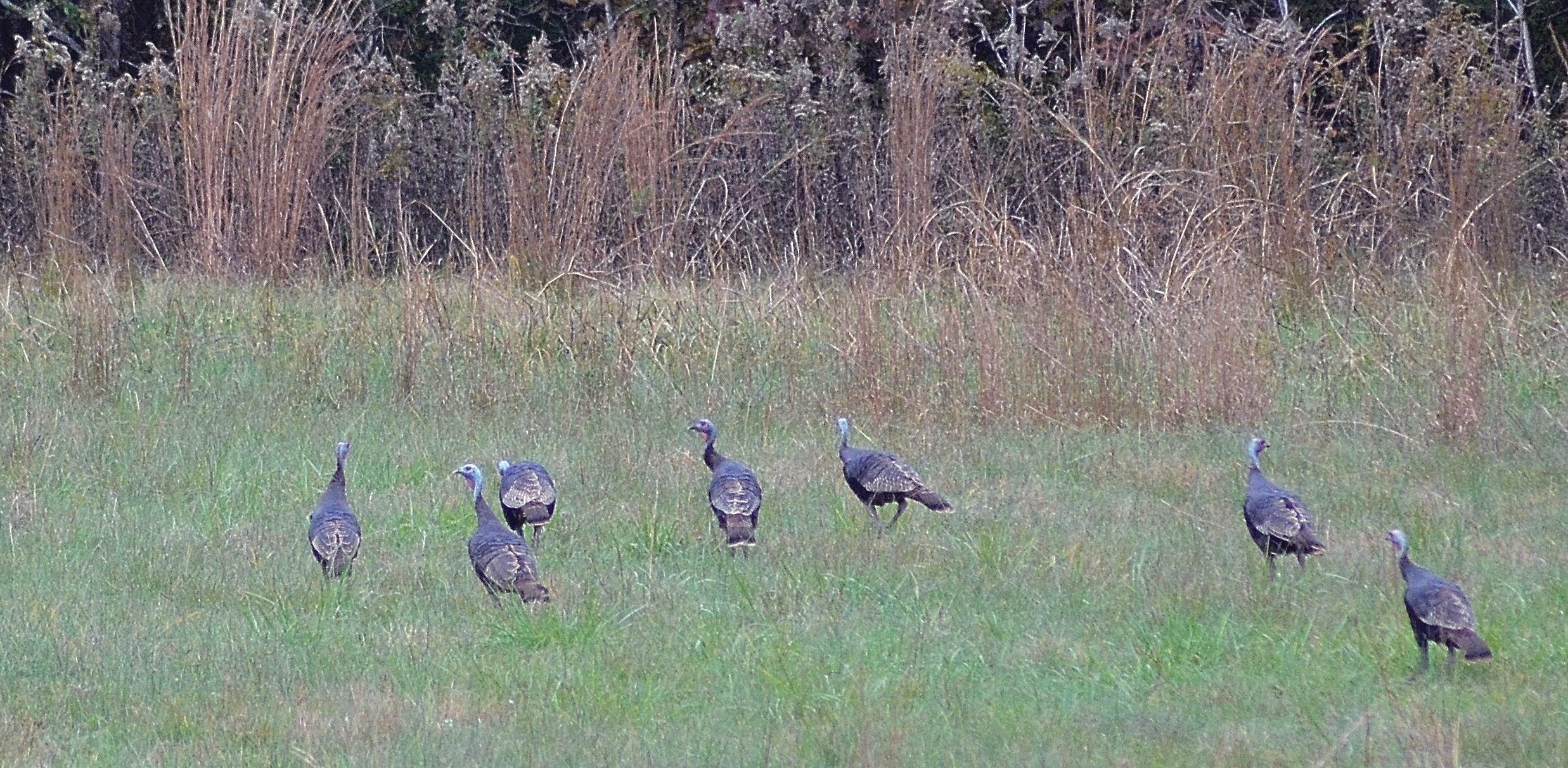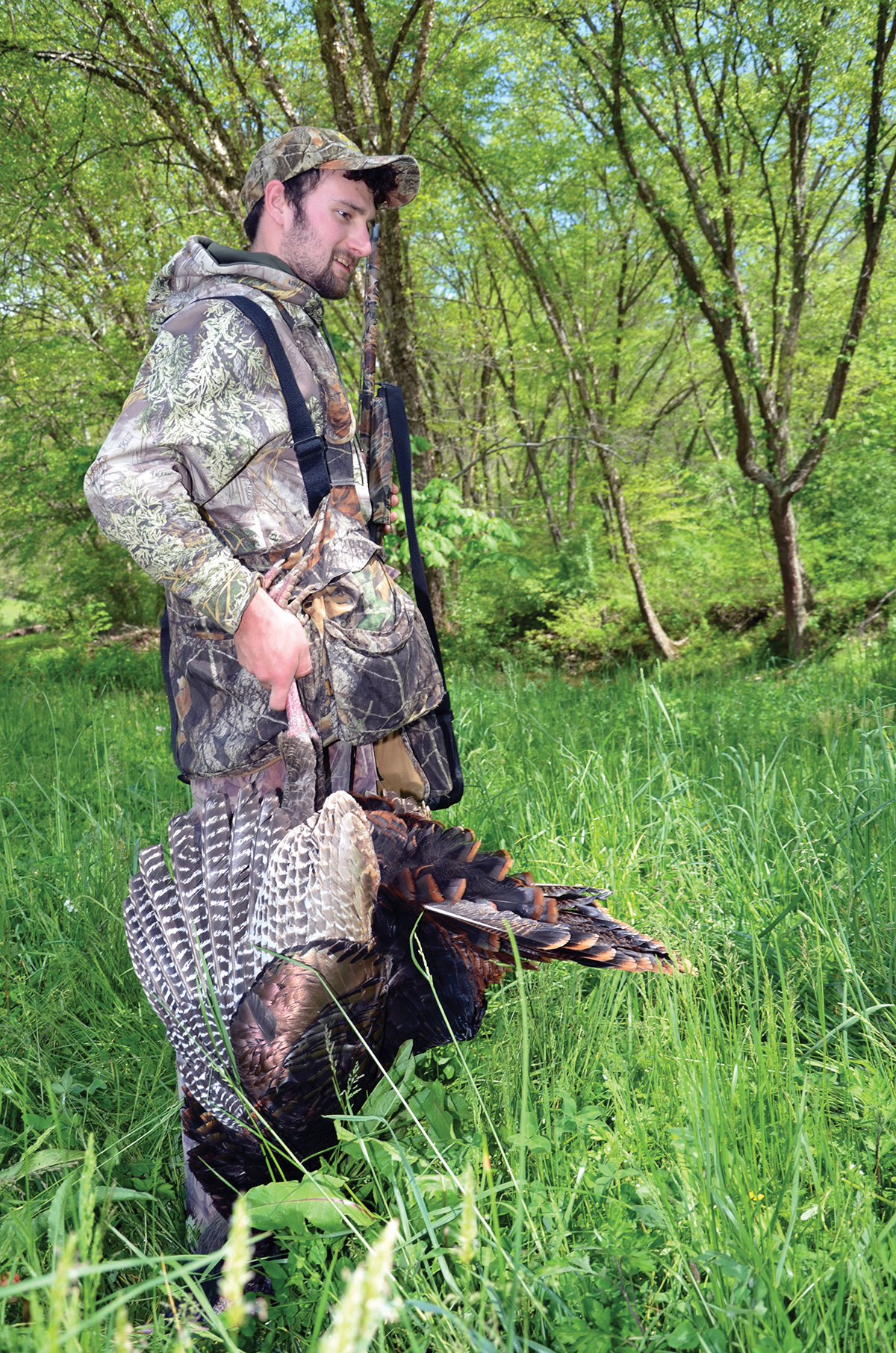
STORY AND PHOTOS BY JOHN N. FELSHER
A hunter remembers the globber that got away.
As turkey seasons open this spring, sportsmen across Alabama will sit quietly under trees or in blinds, occasionally calling to bring the wily birds closer toward them. But I’ll bet none of them will use a 3,000-pound call!
Growing up hunting ducks and small game, we didn’t know much about hunting wild turkeys, a rather uncommon and mysterious game bird to us back then. My dad never hunted them so we didn’t either, at least in the normal sense.
My older brother bought a well-used 1964 Ford Falcon as his first car. Built like a Sherman tank, it could go anywhere, making it an excellent hunting vehicle. Of course, being the ONLY vehicle available to us at the time also made it an excellent hunting vehicle!
Back then, before hunting leases became popular – and very expensive – paper and timber companies frequently allowed people to hunt vast tracts of forests for free, as long as they didn’t cut down any trees. We frequently took that old Falcon to those timberland tracts, cruising logging roads looking for game and new hunting spots.
Just about every piece of metal and joint in that beat-up car squeaked. When we rumbled over those rough roads, Ol’ Squeaky started singing. Even the slightest bump in roads, commonly dubbed “washboards,” alerted anything in the woods for miles to our presence. However, it apparently emitted a certain squeak that turkeys liked, or at least aroused their curiosity. Whenever we drove the Falcon through the woods, turkeys would come running up to the edge of the road to see what in the world was coming!
When Ol’ Squeaky rattled up a turkey, the only thing we could think to do to bag that bird was stop, grab our shotguns and start running after it as the very startled bird rapidly disappeared into the forests. Of course, that never worked. However, I did almost get a shot at a gobbler one day.

Rather than running, this smart gobbler remembered he had broad wings and could fly. He didn’t need to run through the briars, brambles and underbrush like we did. He could fly over that stuff and proceeded to do just that. After flying a short distance, the fat gobbler landed on a branch near the top of a tree just out of the effective range of my shotgun, but well within my view.
“Now, I’ve got him,” I thought to myself, racing as fast as I could to cut the distance. “I’m about to bag my first turkey. I’ll be a hero next Thanksgiving and maybe my parents will let me sit at the big boy table instead of by myself at the kids’ table,” which was not only embarrassing, but depressing since I was the last of the kids.
Knowing that I’d never see him again, I needed to take this, my only chance. I kept my eyes keenly focused on that bird as I ran to get into shotgun range before he flew off and disappeared forever. That plan worked amazingly well and I made good progress – at least at first.
Just about the time I reasoned that I had cut the distance sufficiently to chance a shot, I made a rather abrupt and loud stop. With my eyes focused so hard on that bird, I didn’t notice the large thicket comprised primarily of brambles and thorny vines coming at me at high speed, relatively speaking for the slowest runner in our neighborhood. I also didn’t notice that the little game trail that I was following, probably made by a rabbit since deer were also scarce in those days, disappeared under that pile of bristling razor-sharp spikes. (Okay, maybe that’s a SLIGHT exaggeration.)
Although I was a small child at that time, I was still much bigger than any rabbit. After making my sudden, screaming halt, I struggled to extricate myself from the thorny situation without losing more than a quart or two of blood, which took considerably more time than it did to run this far.
I don’t know what happened to the gobbler when I made my unexpected rapid deceleration, but I seem to remember the haunting notes that distinctly sounded like laughter echoing through the treetops where the bird had sat just seconds before. I sensed a setup! Of course, it might have been the rabbit making that noise too, or my brother who I know was laughing from the road!
In most of Alabama, turkey season opened March 15 and continues through April 30, but seasons differ in some counties and public hunting lands. Regardless of when or where they hunt, Alabama sportsmen cannot bag more than five gobblers per year. New this year: Hunters MUST report all turkey kills through the mandatory Game Check program.
Check www.outdooralabama.com for how to report turkey kills, specific zone boundaries, season dates, other regulations and special hunting opportunities for youths and disabled hunters.
John N. Felsher is a freelance writer and photographer who writes from Semmes, Ala. Contact him through his website at www.JohnNFelsher.com




